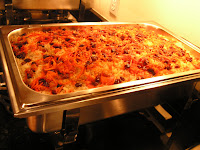Filling:
1 tablespoon of vegetable oil
1 small onion finely chopped
1 lb of ground beef (lean)
½ teaspoon ground cumin
½ teaspoon ground coriander
2 cloves of garlic, minced
½ teaspoon of ground black pepper
Salt to taste
1 jalapeno chopped (optional)
1 medium onion finely chopped
1 cup of spring onion finely chopped
½ cup of cilantro finely chopped
Heat oil in heavy skillet, add the small chopped onion and sauté; add the ground beef and continue to sauté. Add cumin, coriander, garlic, black pepper, salt and jalapeno. Cook until it is done, it should be dry when it is done. Remove from the heat and let it cool. Add the chopped medium onion, spring onion and the cilantro and stir. Put aside until the Sambuusi dough is ready.
For the dough:
2 ½ cups of all purpose flour
Salt to taste
¼ cup of unsalted melted butter
1 cup of water
Extra flour as needed for rolling
¼ cup vegetable oil for brushing
Vegetable oil for frying
NOTE: If you do not want to make the dough from the scratch, you can use egg roll wrappers from the grocery.
Dough:
Combine the flour and the salt in a medium-sized bowl, make a well in the center; add the butter and rub the mixture between the palms of your hands. Add the water and continue kneading until the dough comes together and becomes smooth. Cover the dough and put aside for about 20-30 minutes. Divide the dough into 8 round pieces, roll each piece into a 3-inch diameter circle, and brush a ¼-teaspoon of oil on the top surface of each piece. Make two stacks with four pieces in each stack. Then roll each stack into a thin circle that is about 7 inches (18 cm) in diameter. Heat a skillet over low heat, place the stacked dough in the skillet, and heat each stack separately until dry. Remove the stack from the skillet and cut it in half with a sharp knife. Cut the other stack similarly. Now you have 16 semi-circle pieces of Sambuusi dough in four stacks; separate them and using each piece, form a cone, overlapping the seams. Brush with water to glue the seams together. Fill the cone with 1 ½ teaspoon of the filling and press the edges together to seal tightly; make sure there are no voids or openings around the edges. Place each completed piece on a baking sheet.
Preheat the oil in a large pot or a deep-frying pan over medium heat. Add the Sambuusi in batches and fry until golden-brown, turning each Sambuusi frequently until they are golden and crisp. Use a slotted spoon to remove the Sambuusi and drain the oil. Place the Sambuusi on a paper towel to absorb any excess oil and serve while hot.
Enjoy!






















